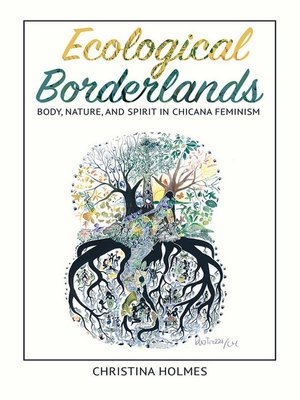Ecological Borderlands
ebook ∣ Body, Nature, and Spirit in Chicana Feminism · NWSA / UIP First Book Prize
By Christina Holmes

Sign up to save your library
With an OverDrive account, you can save your favorite libraries for at-a-glance information about availability. Find out more about OverDrive accounts.
Find this title in Libby, the library reading app by OverDrive.



Search for a digital library with this title
Title found at these libraries:
| Library Name | Distance |
|---|---|
| Loading... |
Environmental practices among Mexican American woman have spurred a reconsideration of ecofeminism among Chicana feminists. Christina Holmes examines ecological themes across the arts, Chicana activism, and direct action groups to reveal how Chicanas can craft alternative models for ecofeminist processes.
Holmes revisits key debates to analyze issues surrounding embodiment, women's connections to nature, and spirituality's role in ecofeminist philosophy and practice. By doing so, she challenges Chicanas to escape the narrow frameworks of the past in favor of an inclusive model of environmental feminism that alleviates Western biases. Holmes uses readings of theory, elaborations of ecological narratives in Chicana cultural productions, histories of human and environmental rights struggles in the Southwest, and a description of an activist exemplar to underscore the importance of living with decolonializing feminist commitment in body, nature, and spirit.
| Cover Title Copyright Contents List of Illustrations Acknowledgments Introduction. Ecological Borderlands: Connecting Movements, Theories, Selves 1. Borderlands Environmentalism: Historiography in the Midst of Category Confusion 2. Misrecognition, Metamorphosis, and Maps in Chicana Feminist Cultural Production 3. Allegory, Materiality, and Agency in Amalia Mesa-Bains's Altar Environments 4. Body/Landscape/Spirit Relations in Señorita Extraviada: Cinematic Deterritorializations and the Limits of Audience Literacy 5. Building Green Community at the Border: Feminist and Ecological Consciousness at the Women's Intercultural Center Conclusion. Bridging Movements with Technologies for the Ecological Self Notes Bibliography Index | Holmes offers us new ways to consider what she calls performative ecological intersubjectivities that emerge from Chicana and Mexican American women's creative thinking, art-making, and spirituality, as well as from their commitments to social and ecological justice.—Irene Lara, coeditor of Fleshing the Spirit: Spirituality and Activism in Chicana, Latina, and Indigenous Women's Lives
This brilliant, accessible, and complex intervention should be read not just by those interested in environmentalism and feminism, but by all transnational, decolonizing, and materialist thinkers and doers, whether scholars, students, or activists.—Noel Sturgeon, author of Environmentalism in Popular Culture: Gender, Race, Sexuality, and the Politics of the Natural
|Christina Holmes is an assistant professor of women's, gender, and sexuality studies at DePauw University.
Holmes revisits key debates to analyze issues surrounding embodiment, women's connections to nature, and spirituality's role in ecofeminist philosophy and practice. By doing so, she challenges Chicanas to escape the narrow frameworks of the past in favor of an inclusive model of environmental feminism that alleviates Western biases. Holmes uses readings of theory, elaborations of ecological narratives in Chicana cultural productions, histories of human and environmental rights struggles in the Southwest, and a description of an activist exemplar to underscore the importance of living with decolonializing feminist commitment in body, nature, and spirit.
| Cover Title Copyright Contents List of Illustrations Acknowledgments Introduction. Ecological Borderlands: Connecting Movements, Theories, Selves 1. Borderlands Environmentalism: Historiography in the Midst of Category Confusion 2. Misrecognition, Metamorphosis, and Maps in Chicana Feminist Cultural Production 3. Allegory, Materiality, and Agency in Amalia Mesa-Bains's Altar Environments 4. Body/Landscape/Spirit Relations in Señorita Extraviada: Cinematic Deterritorializations and the Limits of Audience Literacy 5. Building Green Community at the Border: Feminist and Ecological Consciousness at the Women's Intercultural Center Conclusion. Bridging Movements with Technologies for the Ecological Self Notes Bibliography Index | Holmes offers us new ways to consider what she calls performative ecological intersubjectivities that emerge from Chicana and Mexican American women's creative thinking, art-making, and spirituality, as well as from their commitments to social and ecological justice.—Irene Lara, coeditor of Fleshing the Spirit: Spirituality and Activism in Chicana, Latina, and Indigenous Women's Lives
This brilliant, accessible, and complex intervention should be read not just by those interested in environmentalism and feminism, but by all transnational, decolonizing, and materialist thinkers and doers, whether scholars, students, or activists.—Noel Sturgeon, author of Environmentalism in Popular Culture: Gender, Race, Sexuality, and the Politics of the Natural
|Christina Holmes is an assistant professor of women's, gender, and sexuality studies at DePauw University.







